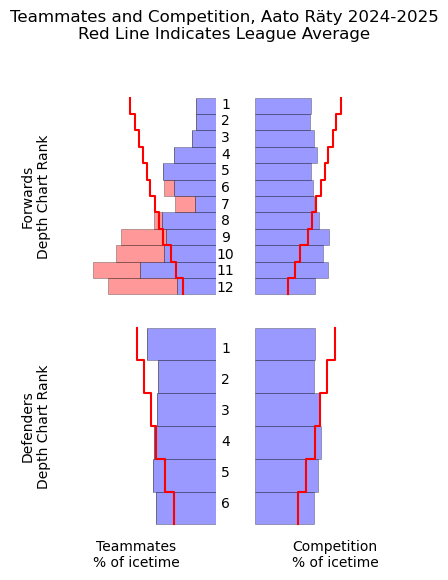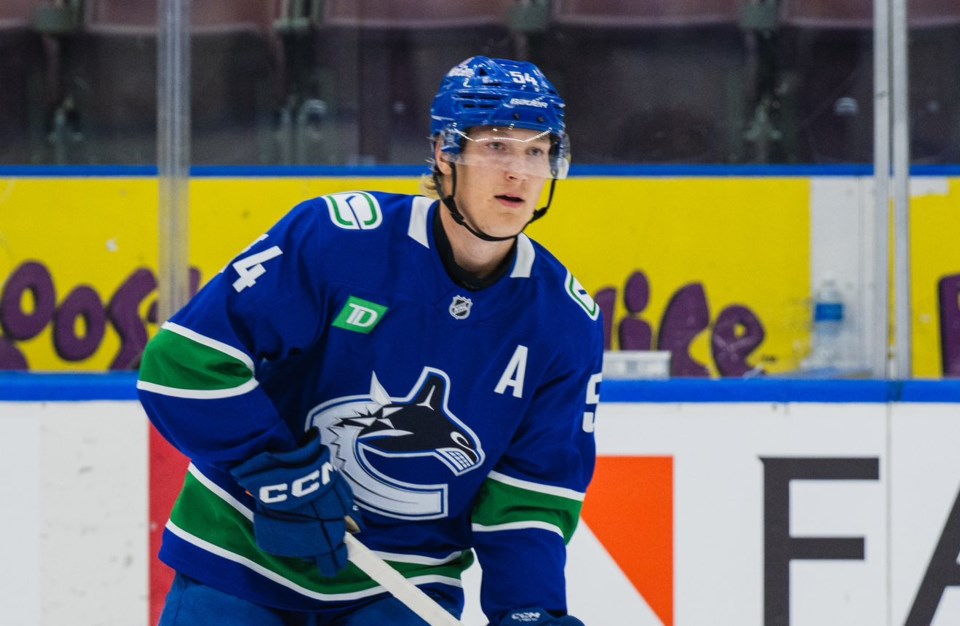The Â鶹´«Ă˝Ół»Canucks’ management group has made no bones about needing another top-six centre.
Even when general manager Patrik Allvin was in the midst of , he had to admit that they still wanted to add another centre.
"You might have best top-three centres in the league"
“If you look around the league, the centres are a priority in how you build your team,” said Allvin. “Chytil is still young, he missed some games, but I think he has the intangibles to play higher up in the lineup and definitely the skillset to do so. I think, if I’ve got it right, I believe he had a year where he had 60 points. If you go by that, I think that’s probably in line with some of the other second-line centres around the league.
“But if you’re trying to get better, if you can find something that fits the criteria of a second-line centre, I think you might have the best top-three centres in the league if you have Filip Chytil on your third line.”
Allvin did not have it right, incidentally: Chytil’s career high is 45 points in 74 games in the 2022-23 season, a 50-point pace over 82 games. Chytil has never scored at a 60-point pace in his career.
To be fair, 45 points is legitimate second-line production, though far from high-end production for a second-line centre. The trouble with Chytil is that, even when healthy, he hasn’t scored at that rate in most seasons.
Also, that “even when healthy” clause is a load-bearing one: Chytil has had all kinds of trouble staying healthy thanks to an unfortunate history of concussions.
Maybe Chytil can stay healthy and break out at the age of 26, but Allvin is right about one thing: the Canucks would look a lot stronger up the middle if Chytil was on the third line instead of the second.
The issue is that as much as the Canucks want another top-six centre, . Their cap space is down to the thousands of dollars rather than millions, meaning they would need to move out some serious salary in a trade to make room for a top-six centre.
Or maybe they don’t. Maybe, , their second-line centre has been here the whole time.
Aatu Räty scored at a top-six rate...sort of
When the Canucks acquired Aatu Räty in the Bo Horvat trade, one had to wonder if Räty might one day fill Horvat’s shoes as a two-way, second-line centre. That hasn’t happened yet in the two years since the trade, but he has developed well in the AHL.
The 22-year-old prospect put up 40 points in 43 games in the AHL last season, good for sixth in the league in points per game among players under the age of 23. Up until an injury knocked him out of the lineup in the playoffs, Räty was centring the Abbotsford Canucks’ first line.
Räty’s 0.93 points per game is a higher rate of scoring in the AHL at the same age than Jason Pominville, Jonathan Marchessault, and Patrick Sharp, among others who went on to become top-six forwards.
Of course, there are dozens of other players who scored at a similar rate in the AHL at 22 and never made the NHL, let alone became top-six forwards. But Räty has a leg up on many of those players — several legs, to Cronenberg that metaphor.
Räty has size on his side at 6’2” and 190 lbs; he’s dynamite in the faceoff circle, winning 57.4% of his faceoffs in the NHL last season; and he’s already shown he can produce in the NHL.
Räty had 7 goals and 11 points in 33 NHL games last season, a scoring pace of 17 goals and 27 points in 82 games. That’s far from top-six production, but let’s remember that Räty played limited minutes in the NHL, averaging just 10:39 in ice time per game with negligible time on the power play.
If we look at his scoring rate in those minutes, Räty was actually one of the most productive players on the Canucks at 5-on-5.
Among forwards who played at least 200 minutes at 5-on-5 last season, Räty was first on the Canucks in goals per 60 minutes, averaging 1.24 goals per hour, well ahead of Pius Suter in second place at 1.05.
Meanwhile, Räty’s 1.77 points per hour at 5-on-5 ranked third on the Canucks, just behind J.T. Miller.
Among the 452 forwards in the NHL who played at least 200 minutes at 5-on-5, Räty’s 1.24 goals per 60 minutes ranks 13th, just ahead of Dallas Stars first-line winger Jason Robertson.
In other words, in the minutes he was given, Räty produced points like a top-six forward.
Aatu Räty still has a lot to prove
Let’s be clear: Räty’s production, though legitimately at a top-six rate, comes with all kinds of caveats.
For instance, Räty had a 20.6% shooting percentage, which was the 18th highest among NHLers who played at least 20 games last season. The odds of that continuing next season are quite low, so that top-flight goalscoring rate probably won’t last.
Räty also isn’t a primary play-driver the way Chytil is with his ability to gain the offensive zone with speed. Räty isn’t the fastest skater — his top speed of 21.7 mph last season was below average among NHL forwards — but he is faster than he used to be. For what it’s worth, he’s faster than Pius Suter.
Räty was also extremely sheltered by Rick Tocchet. , Räty spent just 17.7% of his 5-on-5 ice time against elite competition, with only Drew O’Connor, Linus Karlsson, and Nils Åman facing top lines less on the Canucks.
That shows up in this chart from , with the red line indicating the league average. Räty primarily played against fourth lines.

In fairness, Chytil was also significantly sheltered by Tochet, playing just 18.5% of his 5-on-5 minutes against elite competition. By comparison, Elias Pettersson comes in at 29.8%.
It’s an open question of whether Räty could produce against tougher competition. It’s not as simple as taking a player with a high scoring rate in a bottom-six role, handing them more minutes, and watching the points roll in.
Still, there are reasons for optimism when it comes to Räty. His underlying numbers are generally quite good. His 51.1% corsi at 5-on-5 ranked fourth among Canucks forwards last season and the Canucks out-chanced their opposition 140-to-120 when he was on the ice at 5-on-5, a scoring chance percentage of 53.9% that led all Canucks forwards.
It’s also worth noting that Räty’s lower quality of competition also came with a lower quality of teammates. Räty also primarily played with fourth-liners for most of the season. It was when he got an opportunity to play with better wingers in Kiefer Sherwood and Dakota Joshua that Räty put up most of his points towards the end of the season.
So, that’s the question: with the right wingers, could Räty be a second-line centre? Perhaps with Evander Kane and Conor Garland retrieving the puck with speed, Räty wouldn’t have to be as fleet of foot.
Or perhaps all of this is the wrong question. Instead of trying to find one second-line centre, is it possible that a combination of Räty and Chytil could make up a second-line centre in the aggregate?
With those two as middle-six centres, could they provide enough scoring combined to make up for the lack of a legitimate second-line centre?



